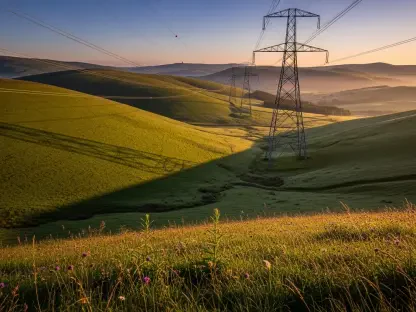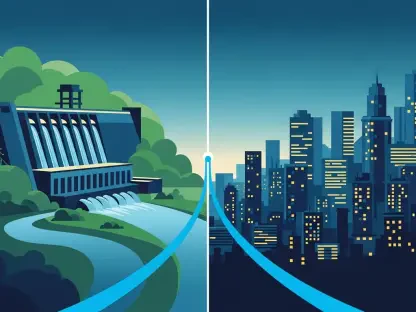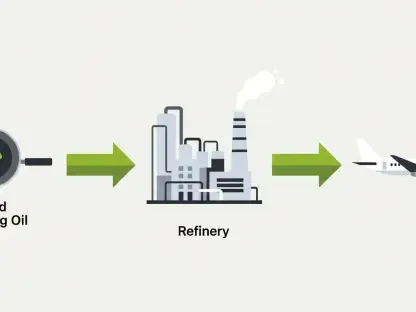Listen to the Article
The climate crisis is no longer just a buzzword—it’s an ever-evolving reality that condenses the quality of life most are accustomed to. While traditional approaches to solar, wind, and hydropower are still integral to strengthening sustainability in energy production, many industries are on the precipice of renewable greatness by conceptualizing the inconceivable and capturing energy in the most creative and innovative ways.
From walls to walkways, today’s energy engineers are breaking new ground and painting the path toward a greener future by reconfiguring how companies interact with everyday materials in more eco-friendly ways that require no additional energy from their side in the production of power itself. So, let’s scratch the surface of sustainability possibilities and dive into the next frontiers of energy production.
Unlocking a Brushstroke of Solar Genius
The renewable energy sector is getting a new coat of paint—solar paint, that is. Following the growing popularity of solar panels as an alternative energy source, solar paint, or photovoltaic (PV) coatings, is the latest innovative idea propelling sustainability. You may ask, how does it work? Quite simply, the answer is just like its conventional counterpart—while generating electricity from the sun.
Solar paint is not one singular product; it refers to a series of technologies that come together to generate power from the sun using liquid instead of hardware. While solar paint technology is still under development, three different types hold significant potential:
Quantum dot solar cells
The quantum dot approach enables solar technology to absorb a broader light spectrum than traditional solar panels. Another way they differ is that solar paint is designed to harness infrared rays, apart from visible light, to boost the efficiency of solar energy systems. By incorporating nanoparticles into solar cells and then mixing them into paint, energy manufacturers can potentially use solar paints to strengthen existing solar panels—or create entirely new solar-powered systems.
Hydrogen-producing solar paint
As one of the cleanest and most prevalent sources of fuel for power generation, hydrogen energy has attracted the interest of the research community. Hydrogen-producing solar paint is designed to transform water vapor into electricity. After absorbing the air’s moisture, oxygen and hydrogen molecules can be separated using solar energy. The hydrogen can be isolated and used to create clean energy. Additionally, this technology thrives in a wide range of climates and doesn’t require the water to be filtered, making it more accessible.
Perovskite solar paint
Did you know that mineral compounds—like perovskite crystals—can conduct electricity when struck by lightning? This principle is often applied to solar cells, but it can be taken one step further by transforming these cells into a liquid form—which can also produce electricity. This liquid can then be turned into perovskite solar paints to spray thinly on windows, roofs, and walls. With a single-junction power conversion efficiency (PCE) as high as 25.2%, this technology can yield tremendous results for energy generation.
By creating power sources that are as easy to use as a paintbrush swipe, the renewable energy sector can achieve a wider reach over the vulnerable communities disproportionately affected by climate change. Solar paints prove to be an effective form of clean power that supports energy sovereignty for both the planet and its people.
Building a Sustainable Future from the Ground Up
Carbon absorbers
After water, cement is one of the most used substances on the planet—along with all the carbon it takes to produce it. In fact, nearly 8% of the world’s CO2 emissions are attributed to the cement-making process. Fortunately, the renewable energy sector is ushering in a game-changer thanks to the construction industry: green concrete.
As a means to revolutionize urban development, green concrete—or carbon capture concrete—absorbs carbon dioxide using technology that cures and sequesters carbon throughout the entire lifecycle of concrete. By doing so, concrete production empowers the reduction of the greenhouse gas emissions caused by construction. Additionally, this approach bolsters the strength and durability of concrete compared to traditional mixtures—all while using fewer materials.
Electrical conductors
With the powerful potential to propel the construction industry to the forefront of sustainability, concrete has shown great promise for energy production. In fact, a team of engineers from South Korea is leading the way with a cement-based conductive composite (CBC) that both generates and stores electricity. The power lies in the pressure caused by external mechanical energy sources—such as footsteps, rain, and wheels.
This application is akin to a simplified battery that mixes highly conductive carbon and cement powder to create a supercapacitor. But, because carbon particles repel water, the clumped reaction forms, intertwining tendrils that set in the cement-like wire networks. By slicing microscopic slivers of this cement mixture, encasing them in a potassium chloride-based membrane, and adding water, Franz-Josef Ulm—a civil engineer at MIT—and his team discovered that connecting this to wire could power up a string of LED lights. If scaled up, this construction approach could potentially hold enough power in housing foundations to satisfy daily energy demands.
Conclusion
As the dawn of innovation in renewable energy peeks over the horizon, the construction industry is making great strides in striving for sustainability. From the development of solar paints to energy-generating building materials, this sector is soaring its efforts to unprecedented heights and seamlessly shifting the paradigm from traditional and conventional to transformative and modern.
By embracing energy-efficient alternatives, businesses can bring about breakthroughs that both propel practices in energy generation and storage as well as provide practical solutions for communities that cripple under the constraints of climate change. As the waves of change ripple across uncharted territories, it’s clear that the secret to sustainable development exists even on the smallest scale—with current advancements highlighting the possibilities and potential of environmental reimagination.
The path toward this future may be long, but it’s definitely not treacherous. With the world embracing the ingenuity of eco-friendly approaches to energy creation, businesses of all sizes have the power to progress—all within the four walls of their buildings. It’s already in hand—just waiting to be painted, built, and paved into existence.









